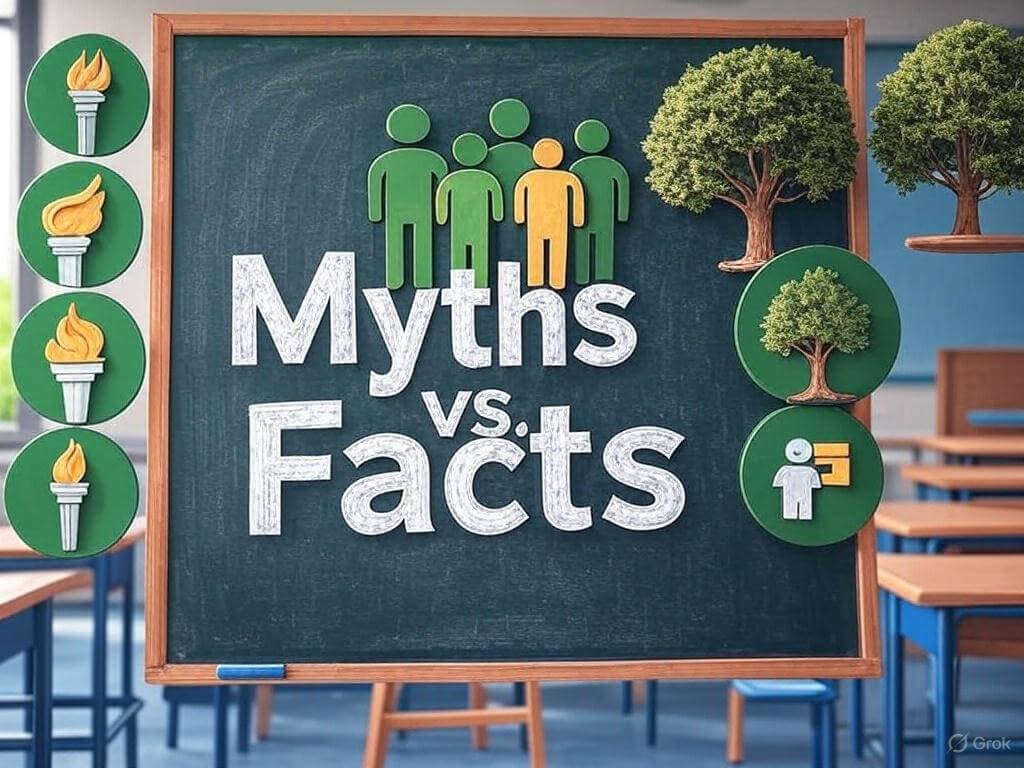5 Myths About the Conservative Movement: Clearing the Air
Myths about the conservative movement often cloud public understanding, painting a distorted picture of its values and goals. From assumptions about economic priorities to stereotypes about social views, these misconceptions can deepen political divides. In this article, we’ll debunk five common myths about the conservative movement, using data, real-world examples, and insights to set the record straight. Let’s dive in and separate fact from fiction!
Why Debunk Myths About the Conservative Movement?
Misconceptions about the conservative movement fuel polarization and hinder productive dialogue. By addressing these myths, we can foster a clearer understanding of what conservatism stands for today. Here’s why tackling these myths matters:
Bridging the Divide
A 2024 Pew Research Center study found that 70% of Americans hold at least one inaccurate view about opposing political ideologies. Debunking myths about the conservative movement can reduce stereotypes and encourage mutual respect.
Evolving Ideologies
Conservatism isn’t static. The movement has shifted over decades, yet outdated assumptions persist. Clarifying these myths reflects the diversity within modern conservatism.
Empowering Informed Debate
Understanding the truth behind conservative values equips readers to engage in informed discussions, whether they agree with the movement or not.

5 Myths About the Conservative Movement Debunked
Let’s tackle five pervasive myths about the conservative movement, uncovering the truth with evidence and examples.
Myth 1: Conservatives Only Care About the Wealthy
Truth: The conservative movement prioritizes broad economic opportunity, not just the elite.
Conservatives often advocate for tax cuts and deregulation to stimulate growth for all. A 2023 Heritage Foundation report shows that conservative policies like the 2017 Tax Cuts and Jobs Act boosted median household income by 6.8% across income levels. While critics argue these policies favor the rich, conservatives emphasize job creation and entrepreneurship as universal benefits.
Myth 2: Conservatives Oppose All Social Change
Truth: The conservative movement values gradual, principled change over rigid tradition.
Many conservatives support social progress when aligned with core values like individual liberty. For example, the Cato Institute notes that 65% of self-identified conservatives now back same-sex marriage, a sharp rise from a decade ago. Conservatives often prioritize stability but adapt to societal shifts.
Myth 3: Conservatives Are Anti-Environment
Truth: The conservative movement embraces environmental stewardship with market-based solutions.
Conservatives often favor innovation over heavy regulation. The American Enterprise Institute highlights conservative-led initiatives like carbon capture technology and private land conservation, which protect nature without stifling economic growth. Teddy Roosevelt, a conservative icon, established national parks, per the National Park Service.
Myth 4: Conservatives Are All the Same
Truth: The conservative movement is diverse, spanning multiple factions.
From libertarians to social conservatives, the movement isn’t monolithic. A 2024 Gallup poll found that 40% of conservatives identify as socially moderate, while others lean traditionalist or populist. This diversity drives debates within the movement, as seen in platforms like National Review.
Myth 5: Conservatives Reject Science
Truth: The conservative movement engages with science, often prioritizing practical applications.
While some conservatives question specific scientific narratives, many embrace research that aligns with policy goals. For instance, the Manhattan Institute supports conservative-backed advancements in nuclear energy as a clean energy solution. Skepticism often stems from distrust in politicized science, not science itself.

How to Navigate Myths About the Conservative Movement
Debunking myths is just the start. Here are five actionable ways to engage with the conservative movement more effectively:
- Seek Primary Sources: Read conservative thinkers directly on platforms like The Federalist to understand their views firsthand.
- Ask Questions: Engage conservatives in respectful dialogue. Ask about their priorities to uncover shared goals.
- Challenge Assumptions: Reflect on your own biases. A 2023 YouGov poll found that 55% of Americans misjudge conservative economic views.
- Explore Diversity: Recognize the movement’s factions—libertarian, populist, traditionalist—to grasp its complexity.
- Focus on Solutions: Discuss policy outcomes, like job growth or conservation, to find common ground.

Myths About the Conservative Movement: Moving Forward
Busting myths about the conservative movement opens the door to better understanding and less division. By debunking stereotypes about wealth, social change, the environment, diversity, and science, we see a movement that’s dynamic and multifaceted. Whether you lean left, right, or center, challenging misconceptions fosters healthier debates and stronger communities.
What myths have you heard about conservatism? Share your thoughts below and let’s keep the conversation going!





